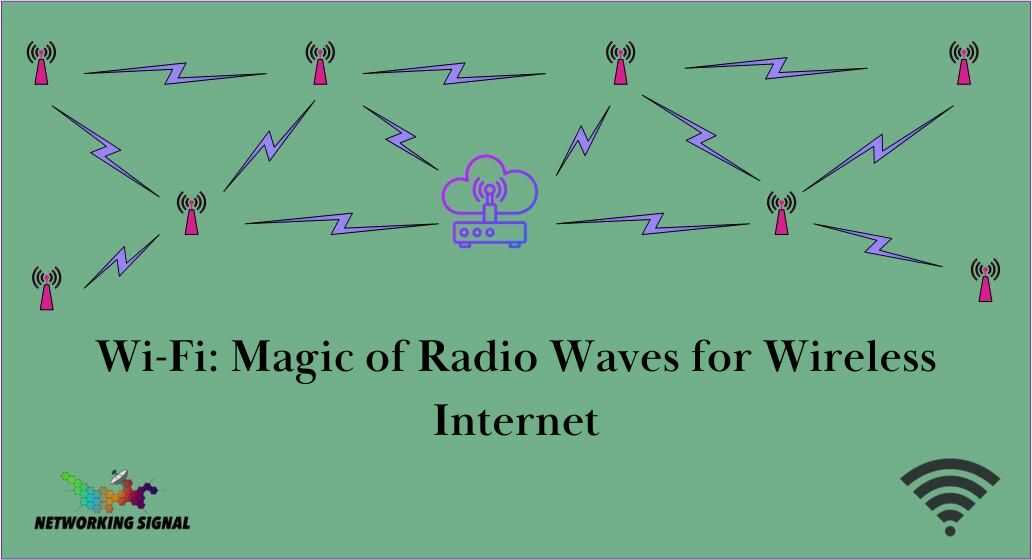Does wifi use radio waves?
Yes, Wi-Fi does use radio waves. Wi-Fi, short for wireless fidelity, allows electronic devices to connect to the internet and communicate with each other wirelessly using radio waves. Radio waves are a type of electromagnetic radiation that can transmit data through the air without cables or wires.
Understanding Wi-Fi
Wi-Fi is a wireless networking technology that uses radio waves to provide high-speed internet and network connectivity.
Wi-Fi-enabled devices such as computers, smartphones, and tablets can connect to the internet via a wireless network access point known as a router.
The router acts as the hub of the wireless network, transmitting and receiving radio signals from connected devices.
Wi-Fi allows fast, reliable internet connectivity without the need for cables and wires limiting device placement.
Wi-Fi networks operate by using radio waves on certain frequency bands to send and receive data. Common Wi-Fi network standards include 802.11b, 802.11g, 802.11n operating on 2.4GHz and 5GHz frequencies. The range of a Wi-Fi network can be extended using repeaters and access points.
Role of the Router
The router plays a critical role in the Wi-Fi network. It wirelessly transmits and receives data to and from connected devices using radio waves.
The router is physically connected to the internet via cable, while also transmitting a wireless radio signal using an antenna.
Devices equipped with a Wi-Fi adapter can detect and connect to the router’s wireless signal to access the internet.
The router handles the connections, data transmission, and security encryption, and provides the network name (SSID) and password.
Without the router broadcasting its wireless signal, Wi-Fi devices would not be able to locate and connect to the network.
Routers contain circuitry to modulate and encode the data into radio signals. They operate on one or more frequency bands with directional or omni-directional antennas. Routers manage traffic flows, connectivity issues, and distribute IP addresses. Newer routers include additional functionality like built-in modems, USB ports, cloud connectivity.
Understanding Frequencies
Wi-Fi uses specific radio frequency bands designated for unlicensed wireless communication. Most modern Wi-Fi networks operate on two different frequencies – 2.4 gigahertz and 5 gigahertz.
The 2.4 GHz band provides a wider range and penetration through walls but can experience more interference from devices like microwaves, cordless phones, etc. The 5 GHz bands have faster data rates and less interference but reduced range.
Routers and devices communicate via these radio bands similar to how radio stations transmit content on specific frequencies.
Countries regulate the allowed frequency blocks and transmission power for unlicensed bands. Communication protocols divide the Wi-Fi bands into multiple channels to allow multiple networks to coexist. Newer Wi-Fi versions allow channel bonding to boost bandwidth. Interference can cause signal congestion and slower speeds on the 2.4GHz bands.
Radio Waves and Microwaves
- The radio waves used by Wi-Fi occupy the microwave frequency range of the electromagnetic spectrum.
- Microwaves have shorter wavelengths than radio waves and higher frequencies starting above 1 GHz.
- Although Wi-Fi operates at microwave frequencies, Wi-Fi signals have much lower power than microwave ovens.
- Microwave ovens emit between 500-1000 watts to cook food, while Wi-Fi routers only transmit about 100 milliwatts – too low to impact human health.
- The microwaves from a Wi-Fi router are only used to carry data.
Radar systems also operate in the microwave frequency range. While Wi-Fi utilizes frequencies between 1 to 6 GHz, different microwave bands go up to 90 GHz and beyond. Microwaves have properties between radio waves and infrared radiation. At lower power levels, microwaves have shown no adverse health effects according to scientific studies.
Final Words
In summary, Wi-Fi relies on radio waves in the microwave frequency range to provide short-range wireless internet connectivity. Radio signals transmitted from a router can pass through walls and connect electronic devices to form a local area network.
Understanding the radio wave fundamentals behind Wi-Fi technology allows us to appreciate this important wireless communication innovation we depend on every day.
While the radio waves powering Wi-Fi originate in the microwave band, they operate at low power and do not pose any health risks.
As Wi-Fi standards continue advancing, faster multi-gigabit speeds, lower latency, and wider coverage will become possible.
However, the basic principles of using modulated radio signals over certain frequencies will remain the same. Wi-Fi has transformed computing and communications by untethering devices and providing flexible, convenient wireless connectivity.

